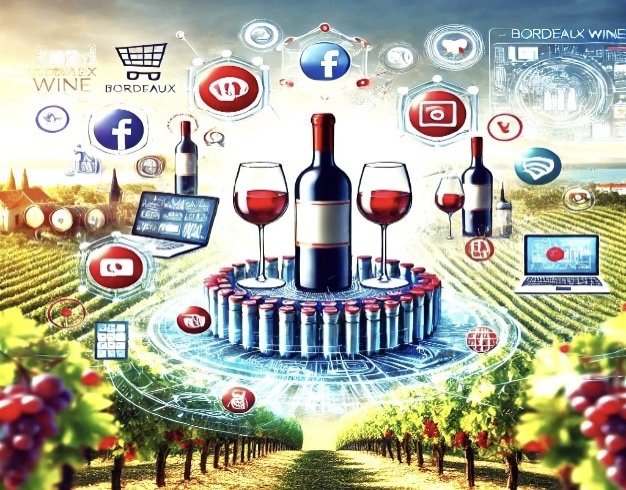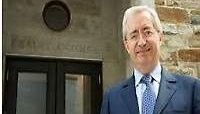
Bordeaux Winemakers Acknowledge Change, but Cling to Heritage
I recently attended a wine event in Manhattan that brought together hundreds of Bordeaux winemakers under one roof. The room buzzed with energy as wine buyers, sellers, educators, sommeliers, and journalists mingled, eager to savor the best Bordeaux had to offer. The participating wineries were all members of the Union des Grands Crus de Bordeaux (UGCB), an esteemed association representing some of Bordeaux’s most prestigious estates.
Despite the glamour and clamor of the event, the wineries face several challenges in maintaining their prominence and appeal in the global wine market. Curious about their strategies, I asked one winemaker whether he was adjusting his marketing approach to address shifting market dynamics. These include rising competition, legal and healthcare concerns prompting some consumers to reduce or forgo wine, and the aging out of traditional wine loyalists.
Acknowledging that the industry environment has evolved significantly since his grandparents’ time, he admitted that these issues were on his radar. Yet, surprisingly, he had no plans to modify his marketing campaigns to tackle these challenges. It seems, at least for now, he’s sticking to tradition—even in a rapidly changing world.
Key issues facing Winemakers
Winemakers in Bordeaux face a complex array of challenges in an increasingly global and dynamic wine market. Intense competition from regions like California, South America, and Australia offers consumers high-quality alternatives at competitive prices, while emerging markets in Asia demand tailored marketing strategies. Climate change poses significant threats, with extreme weather events impacting grape quality and yields, potentially necessitating changes in varietals and winemaking techniques that challenge tradition.
Younger consumers are shifting preferences toward sustainability, lower-alcohol, and organic wines, creating a need for innovation in production. At the same time, economic pressures, such as fluctuating trade barriers and currency exchange rates, strain competitiveness, while sustainability initiatives, though essential, increase costs.
Supply chain disruptions from geopolitical tensions and pandemics further complicate distribution, alongside logistical hurdles in managing vintages. The perception of Bordeaux wines as expensive and exclusive limits accessibility, especially for mid-tier offerings, while the region’s traditional branding and classification systems struggle to engage a modern audience.
Responsibilities of The Union des Grands Crus de Bordeaux (UGCB)
The Union des Grands Crus de Bordeaux (UGCB) represents some of the world’s most prestigious wine estates, but its legacy is increasingly challenged by a dynamic and competitive global market. To assist Bordeaux winemakers in navigating modern challenges, the Union des Grands Crus de Bordeaux (UGCB) must adopt a balanced approach that embraces both innovation and tradition.
- The UGCB should modernize marketing efforts by developing campaigns that appeal to younger consumers, emphasizing sustainability, value, and a more casual wine culture.
- Digital marketing and social media engagement are crucial for reaching new audiences, especially in emerging markets like Asia, where localized strategies can drive growth.
- Simplifying Bordeaux’s classification system or creating supplementary tiers could make the wines more accessible and relatable.
- The Union should support sustainability initiatives by providing financial and technical assistance for adopting eco-friendly practices, collaborating on research to combat climate change, and advocating for harmonized global sustainability certifications to reduce regulatory complexity.

InMyPersonalOpinion.Life
Chateau La Tour Banche 2022
The Story
Located in Bordeaux’s Sauternes appellation, Château La Tour Blanche (certified organic) holds the esteemed Premier Cru Classé status from the legendary 1855 Bordeaux Classification.
Founded in the 18th century by Jean Saint-Marc du Latourblanche, the estate has evolved through the stewardship of visionary owners, each enriching its legacy. In 1876, a pivotal chapter unfolded when financier and philanthropist Daniel Iffla (1825-1907), known as “Osiris,” entrusted the château to the French government in 1909. His bold vision mandated that the estate serve as both a model vineyard and a viticultural school.
Daniel Iffla, known as “Osiris” (1825–1907), was a French philanthropist, financier, and patron of the arts. Born in Bordeaux to a Sephardic Jewish family, he amassed considerable wealth as a banker and stockbroker, notably investing in the expansion of railways during the 19th century. Iffla adopted the pseudonym “Osiris” later in life, symbolizing rebirth and immortality, inspired by the Egyptian deity. Iffla is noted for the construction and restoration of synagogues in France, including the Grande Synagogue of Paris and the synagogue in Versailles. Beyond his contributions to Jewish institutions, he supported various charitable organizations, funded hospitals, and promoted education. A lover of art and architecture, he donated significant works to museums and was instrumental in restoring historical monuments.
Today, Château La Tour Blanche thrives under the guidance of the French Ministry of Agriculture, with an eye toward innovation, it continues to craft exceptional Sauternes while fostering the next generation of viticultural expertise.
The Vineyard
The vineyard is located in Bommes, one of the villages in the Sauternes appellation. Château La Tour Blanche thrives in a unique microclimate shaped by the Ciron and Garonne rivers. This natural phenomenon fosters the development of Botrytis cinerea (noble rot), the key to producing the region’s legendary sweet wines.
Spanning 40 hectares, the vineyard features:
- Sémillon (80%): Celebrated for its richness and depth.
- Sauvignon Blanc (15%): Bringing brightness and acidity.
- Muscadelle (5%): Adding floral and aromatic complexity.
Grapes are hand-picked in multiple passes, ensuring only those touched by noble rot are selected. Fermentation occurs in oak barrels under meticulous temperature control, and the wine matures for 16–18 months in French oak, with some new barrels enhancing its complexity.
Notes
The 2022 vintage, composed of 83% Sémillon, 12% Sauvignon Blanc, and 5% Muscadelle, features 145 g/L of residual sugar. To the eye it presents a color that is pale to medium straw, reflecting its youth. The crisp aroma of lime leaves, green mango, and lemon tart, accented by salted almonds, cedar, and ginger delight the nose. On the palate there are vibrant citrus layers balanced by freshness, finishing with a decadent spiciness. This is a youthful, pure, and vivacious Sauternes, perfect for savoring now or cellaring for future delight.




![Part 3 [ Bordeaux. Marketing Rescue Revitalizing the Legacy, Reclaiming the Market]](https://inmypersonalopinion.life/wp-content/uploads/2025/01/Bor.jpg)
